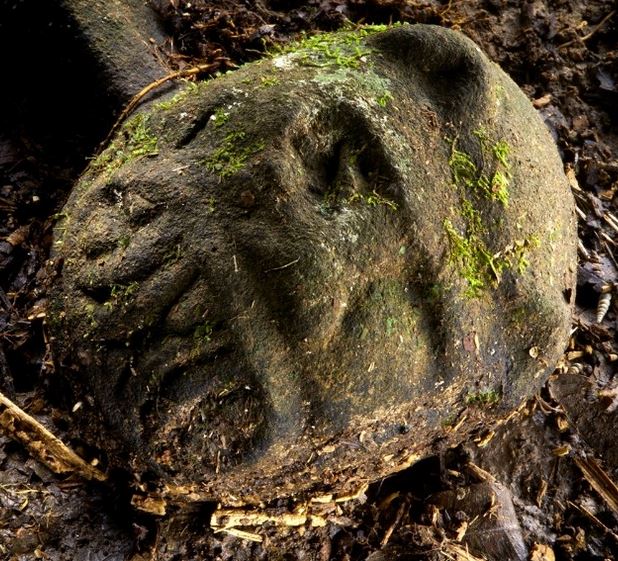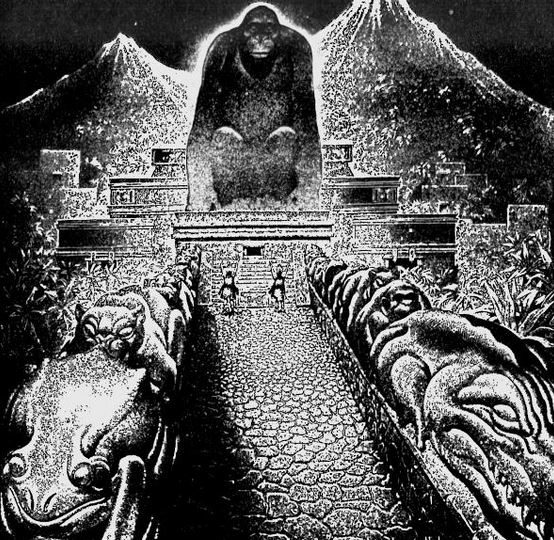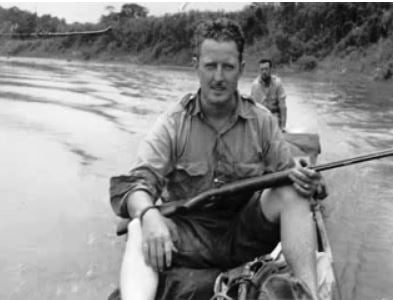A team of Honduran and American archaeologists, aided by a group of former British SAS soldiers, have discovered the legendary “City of the Monkey God”, also known as “La Cuidad Blanca” (Spanish for ‘White City’), a lost city speculated since the 19th century to have untold riches.
In 1520, Spanish Conquistador Hernán Cortés is said to have received “trustworthy reports of very extensive and rich provinces, and of powerful chiefs ruling over them.” This was never confirmed compellingly, but the rumor triggered a quest that has lasted centuries for the lost gold-laden cities of ancient Mexico and Central America.
The City of the Monkey God, thought to be one of several in the Mosquitia region of eastern Honduras, was said to have been home to an unknown people who dominated the lands thousands of years ago but then disappeared without trace – that is, until now.

Prof. Fisher believes this could be a mere-jaguar, representing a human-animal spirit. (Image: National Geographical)
We know nothing about this civilization
We know a great deal about the Mayan culture, history and civilization, but absolutely nothing about this culture that is said to have existed before Christopher Columbus set foot on the New World.
National Geographic, which has published details of the discovery, sent a writer and photographer along with the expedition team to the riverside site located in a crater-shaped valley, surrounded by high mountains.
According to National Geographic, the researchers, who returned from the expedition last week on Wednesday, mapped and surveyed mounds, an earthern pyramid, earthworks, and extensive plazas.
They also discovered an amazing collection of stone sculptures that had been there, untouched, since the city’s inhabitants vanished.
A unique find
Study leader, Associate Professor Christopher Fisher, a Mesoamerican archaeologist who works at Colorado State University, said he was amazed at the pristine, unlooted condition of the archaeological site. He speculated that the cache might have been some kind of offering.
Prof. Fisher said:
“The undisturbed context is unique. This is a powerful ritual display, to take wealth objects like this out of circulation.”
The fifty-two artifacts they discovered were sticking out of the ground. The archaeologists are sure there are many more underneath, with possible burials.
Fisher said that the most remarkable artifact emerging from the ground is the head of what he believes could be “a were-jaguar” (both an Olmec motif and a supernatural entity), perhaps depicting a shaman (spiritual healer). It could also be related to some kind of ritualized ball game, he added.
Co-team member Oscar Neil Cruz, head archaeologist at the Instituto Hondureño de Antropología e Historia, estimates the artifacts date back to between 1000 and 1400 AD.

An illustration by Virgil Finlay representing the Temple in Theodore Morde’s “Lost City of the Monkey God.” (Image: Wikipedia)
Location of the site kept secret
The archaeologists documented the artifacts but left them unexcavated. The location of the site has not been revealed, to protect it from looters.
An aerial survey of the remote valley in La Mosquitia identified the site in 2012. La Mosquitia is the easternmost part of Honduras, along the Mosquito Coast, and extends to northeastern Nicaragua. It is one of the remotest places on Earth and is accessible primary by water and air.
Prof. Christopher said to the Telegraph:
“It shows that even now, well into the 21st century, there is so much to discover about our world. The untouched nature of the site is unique and if preserved and properly studied can tell us much about these past people and provide critical data for modern conservation.”
Is a centuries’ old legend a reality?
For centuries, prospectors and explorers have told tales of a lost city viewed over the jungle foliage.
Locals talked of a “White House” or a “Place of Cacao” where Indians would go to in order to escape from the Spanish conquistadores. These places were said to be Eden-like paradises you could go into, but never return from.

Theodore Morde never revealed the location of the lost city.
For the past 100 years, numerous expeditions have searched for the White City. Theodore Morde (1911-1954), an eccentric adventurer, explorer, diplomat, spy, journalist, and television news producer, mounted the best-known expedition in 1940, sponsored by the Museum of the American Indian (which today is part of the Smithsonian Institution).
Mr. Morde returned with thousands of artifacts, which he insisted he collected at White City. He said the indigenous people in the area had told him it contained a buried statue of a giant monkey god.
Mr. Morde never revealed the location of the site, fearing it might be looted. In 1954 he was found hanging at his parent’s home in Dartmouth, Massachusetts. The medical examiner ruled his death by suicide. Hence, the site’s location died with him.
Conspiracy theorists insist his death was due to sinister forces.
